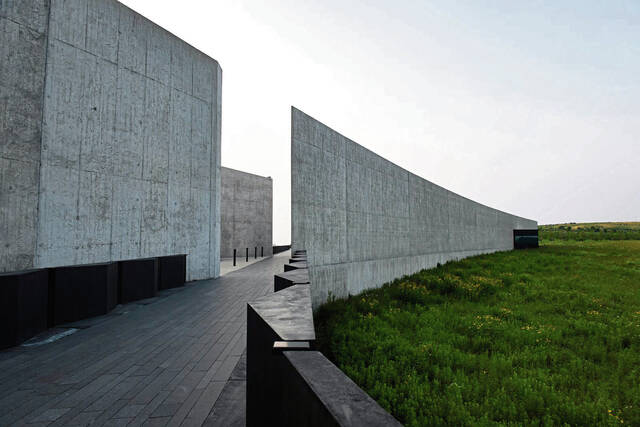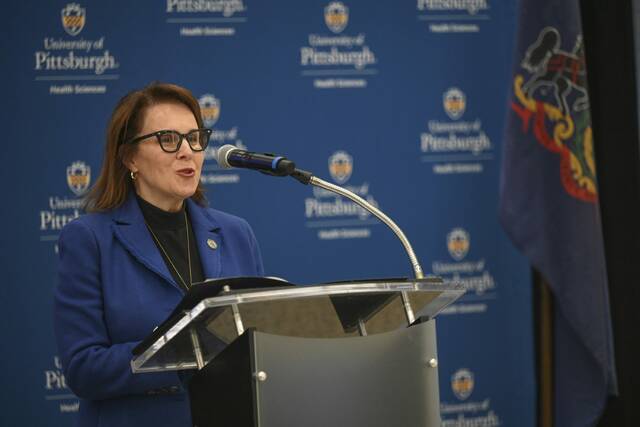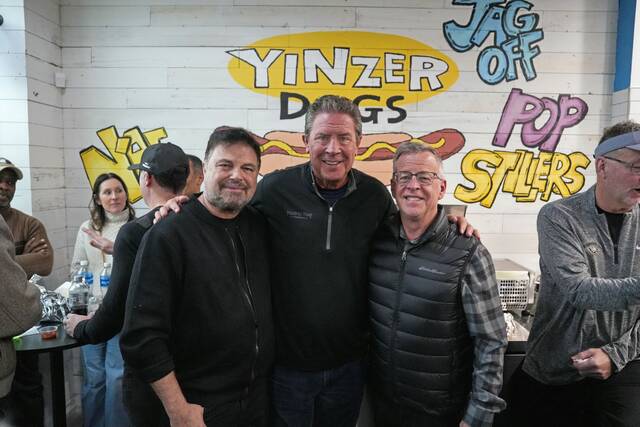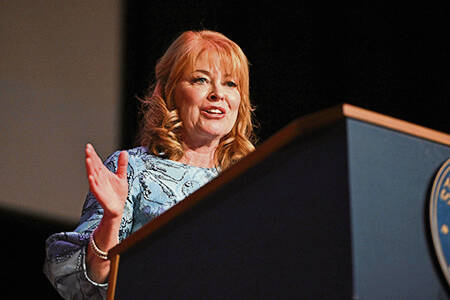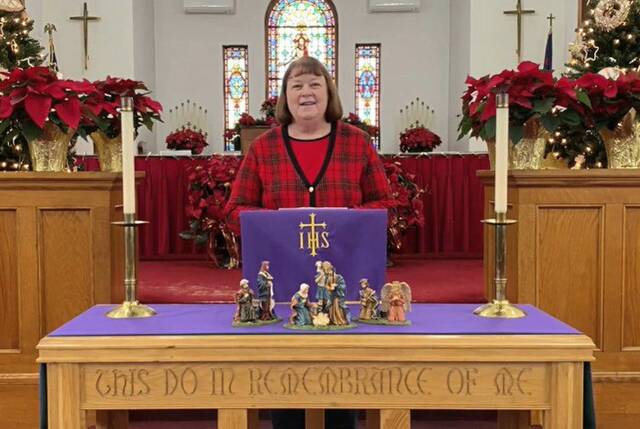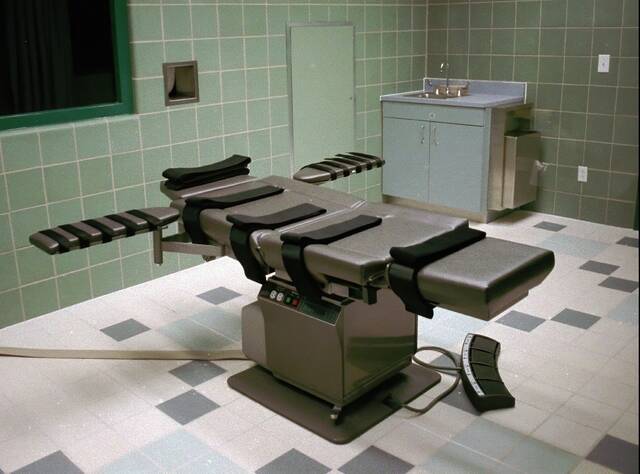There is a language at the Flight 93 National Memorial in Stonycreek Township.
A way of talking. No one actually whispers, but no one uses their full voice either. Every conversation is in hushed tones. Emotions seem to be communicated in the silence in between thoughts.
And that’s just the visitors.
Those who work there have their own vocabulary, too. Where the plane went down, that’s not the crash site. It’s the “impact site.”
That’s not a rock out in the strip mine to mark where United Flight 93 went down. It’s a “boulder.” The volunteers at the park aren’t rangers or guides. They are “ambassadors.”
And those who stormed the cockpit on Sept. 11, 2001, preventing the terrorists from reaching Washington, D.C., aren’t the victims.
They are the “heroes.”
None of that is verbalized. It’s osmosis. You just sorta pick it up along the way. And you understand why.
I had only been back to Stonycreek Township once since I was a small part of the news coverage in the days after 9/11. I toured the memorial grounds in 2017. But in preparation for our 20th anniversary coverage, my memory bank needed a jolt.
I needed a reminder of the feeling of this place, the events described in the museum and of the physical location itself.
I was doing OK on the first two fronts. The emotions of being there flooded back. I walked into the visitors center, and it had left such an impression on me from my first trip that I felt as if it had been only a week since my last visit.
The geography of the place, though, that’s where I was struggling. Just as I did when I visited in 2017.
Where is that big, open field? Wasn’t there a corn field?
Where did all those houses go? The ones we parked in front of, with the television satellite trucks, alongside that quiet street. Didn’t I make a turn off the main road at some big tank or something? Is that gone now?
It had been almost 20 years since I first drove through Shanksville on Sept. 14, 2001 — three days after Flight 93 crashed during the Sept. 11 terrorist attacks. Twenty years after I shelved whatever sports reporting experience I had to suddenly become a news reporter again, like my first job out of college.
This time, I wasn’t covering a city council meeting or political rally. I was going to file reports from one of the sites of the biggest American news event since Pearl Harbor.
And now I couldn’t remember the details about a place that — at the time — felt like one I couldn’t possibly forget.
That can’t be right. So much of it feels so clear in my head.
I can easily recreate the image of the small makeshift memorial set up near the television encampment. The little blonde girl who put a teddy bear down next to it while holding her mom’s hand. Every road lined with American flags from the turnpike through the town.
What was wrong with me? Why couldn’t I remember? Why did the location feel so foreign?
Had I really gotten so callous that even covering something as somber and meaningful as the Flight 93 event was nothing but a fuzzy recollection in my mind?
Walking the grounds solo the last time, that didn’t help. I was in good hands this time. Western Pennsylvania National Parks superintendent Stephen Clark was going to give me a tour and answers.
Within 20 seconds, I knew I was talking to the right guy. The enthusiasm of a college football special teams coach. The friendly demeanor of Ned Flanders. The knowledge of the memorial and its history like a supercomputer.
We hadn’t even walked past the restrooms, and I felt like I had taken a masters course on the sequence of events.
As we walked toward the memorial overlook, Clark interrupted himself and pulled out his phone. He took a photo of a metal sign that read “Please don’t litter.” The corner was the slightest bit scuffed and dog-eared.
“That’s gone,” he grumbled. “Before the end of the weekend.”
We then veered off the walkway. I thought I was getting an “off the path” private tour.
No. A stray handi-wipe had blown a few feet into the brush. That can’t happen here. Clark picked it up and shoved it in his pocket, never breaking stride or his monologue about the place.
Clark illustrated the exact flight path of the plane. Told me the precise moment when the passengers on board stormed the cockpit. The vain attempts of the hijackers to throw them off balance by rocking the plane back and forth. How that resulted in the plane inverting and eventually crashing belly-up in the empty strip mine just beyond our view before it could reach its intended target of Washington, D.C.
Then he paused for a moment and said, “What’s important to me, though, is knowing how you experienced this place. In what way can I help you recreate your memories so you can write what needs to be written?”
So I told him how my radio station at the time (ESPN Radio 1250) made the right decision to preempt all local programming with network news for the first day and a half after the terrorist attacks.
How, once the NFL games got canceled that weekend, I pivoted away from sports and back to my news background, heading to Somerset County to file reports on Friday (Sept. 14) and eventually down to Washington, D.C. and the Pentagon on Saturday.
Then I went back to Stonycreek Township on Monday. That’s when first lady Laura Bush arrived to accompany the family members of those who died aboard Flight 93 out to the impact site.
At 5-foot-6, covering NFL teams, I’m used to feeling small. I’ve never felt as small as I did at that moment.
That’s when Clark told me almost everything I needed to know and see. Except for where that media staging area was. I still couldn’t place it.
He said a few ambassadors who I was scheduled to meet may be able to help me. The first were Chuck and Cindy Smyser, a married couple who moved to Shanksville from Maryland nine years earlier because it was centrally located between their children and grandchildren.
Not long thereafter, they started volunteering at the memorial because they loved the town. Because they loved the people. Because they noticed how the divining rod of fate put that plane down in a completely empty strip mine, so it wouldn’t cause any more agony to those on the ground.
Because they felt how the people who lived here accepted how their hometown was assigned this role in history. And embraced it. They owned it. They would use it to show the world who they are as a community.
“It’s a point of pride for the county, how the county responded to what happened here,” Chuck Smyser said.
The Smysers loved the place so much that they decided to dedicate much of their free time to volunteering at the memorial.
“Volunteering is a way we learned about the passengers and the crew,” Cindy Smyser said. “We enjoy sharing with the visitors that come by. We think of the passengers and crew as the heroes.”
Being relative newcomers to Shanksville, however, they also were unable to clear my scrambled brain about where I had been working 20 years ago.
“I bet Dawna could help you, though,” Chuck said.
Dawna Bates was my last scheduled contact of the day — an ambassador at the memorial, part-time record keeper, occasional seamstress for the bunting and drapes for formal ceremonies if needed.
She is a 72-year-old retired schoolteacher from Latrobe who was a Red Cross volunteer during the days after the crash — giving her time to aid those combing through the wreckage and investigating the site.
Over the next half-hour, she told stories of people from the region who were volunteering for weeks at a time to aid the recovery workers. People not only donating their heavy equipment to sift through the wreckage for evidence but also people like Chuck Wagner operating it themselves for hours on end.
She told me about the 9/11 cross that has been erected at the volunteer firehouse, made of steel from parts of the World Trade Center.
Dawna could also recite every story and every detail any person could need to know about Flight 93, the heroes (or “angels,” as she calls them) on board and how the town responded.
Because that’s what “ambassadors” do. Because that oddly specific title on the job description means something when you think about it — and when people such as Dawna, Steve and the Smyzers appreciate what the word truly means.
Because this town stirs one lasting memory for the rest of the country, being an ambassador here carries considerable significance. And if you’re a retired teacher and you can teach others about what happened on that airplane, then they’ll teach their kids what the passengers on Flight 93 did.
“Children need to have this message,” Bates said. “That’s why I continue to this point to come back and try to give the message. I tell kids all the time, ‘These people made a decision in 20 minutes, and never did they dream that it would change the world.’ So I say to them when you make a decision, you need to ask yourself, will it affect anyone else?”
Dawna spoke with the precision and the detail that only a person with years of teaching elementary school children could. Measured tempo. She did so with controlled but obvious emotion in her voice. At times it wobbled, but it never cracked.
Except one memory she shared.
“On the hill there were three horses the state troopers were sitting on as the families came through. For about an hour,” Bates said. “Those horses stood there and never moved. It was like they knew it was a special moment and we have to behave. They just stood there, and it was such a beautiful site to see. I will remember that always.”
After our interview, Donna volunteered one more thing. To drive the long way home to show me where the media compound had been. Because she was providing assistance all over the area as part of her Red Cross efforts, she knew exactly the spot I had described.
So I followed Dawna. Sure enough, there was the Highland Tank. I started seeing the houses exactly as I remembered them. There was that big field. And the dirt road that is now blocked off that would’ve been the access point to the resting spot of the nose of the plane.
I got out of the car and breathed a sigh of relief. I felt so much better. I hadn’t forgotten. I wasn’t the jaded person I was fearing that I had become.
Well, not entirely.
Dawna pointed me in the direction of the steel cross and suggested I see it. I did. She was right. It’ll choke you up for sure. I gave Dawna a hug and thanked her for her efforts.
She patted me on the back and said, “My pleasure. It’s why we do this. I could tell that you wanted to remember. We should all want to remember the best that we can.”


